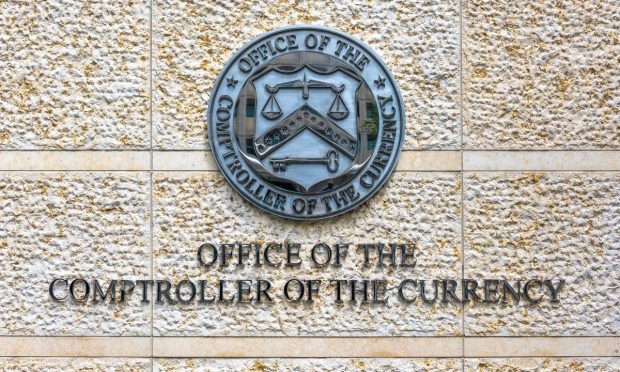OCC’s Hsu: Interoperable Stablecoins Key to Success of Crypto Economy

The need for stablecoins to be interoperable with each other and a potential digital dollar is too important to be left either to government regulators or to cryptocurrency developers.
Speaking at a conference Wednesday (April 27), Acting Comptroller of the Currency Michael Hsu said that creating one set of technical and legal standards for the dollar-pegged cryptocurrencies is as “vital to keeping the dollar competitive in the blockchain-based digital economy” as setting the standards for the World Wide Web was to the development of the modern internet economy.
“Stablecoins are essentially the money of that,” blockchain economy, he said. “They’re the native money of that system. So, you have a lot of these U.S. dollar stablecoins. They’re not interoperable. And I think this is really important.”
The Office of the Comptroller of the Currency was created as a bank regulator in the wake of the economic damage of the 1837-1864 “Free Banking” era, in which banks minted their own banknotes that were valued not based on the printed dollar value but on the reputation of the issuing institution, Hsu pointed out.
That led to the creation of the “fully fungible” greenback — the “the dollar that’s in your wallet that we can use anywhere in the country,” he said.
“The dollar that’s in your wallet is the liability of the federal reserve,” Hsu noted, pointing out that “the dollar that’s in your bank account is not; it’s a liability of a bank. And yet we treat it all as fully fungible. And that enables an enormous amount of economic activity, which is fantastic.”
Walled Gardens
The problem, he said, is “that is not the case in the stablecoin space.”
Calling the $180 billion stablecoin market the “foundation” of the $2 trillion cryptocurrency industry — they are used in almost all exchange trades, as well as for many decentralized finance (DeFi) lending protocols — Hsu said it’s important to be “mindful of how can we architect that system so that we protect people, we protect the dollar, and we provide that base upon which innovation can build without [people worrying] about the stability of the money underneath them.”
See also: Stablecoins Are Better, Safer, More Innovative Payments Solution Than Bitcoin
With many stablecoins built on different blockchains — the biggest, like tether and USD coin are on several — they cannot be made interoperable across those blockchains. A whole subset of crypto payments project called cross-chain bridges has already sprung up, allowing people to deposit a cryptocurrency from one blockchain to borrow tokens usable on another.
And while it works, it’s not only a kludge, it’s a dangerous one. In the space of just six months, bad coding or security has allowed thieves to steal $1.5 billion from just three bridge projects — Poly Network, Ronin Network and Wormhole.
See more: With $1B Hacked, Cross-Chain Crypto Payments May Be in Jeopardy
Without interoperability, stablecoins could create digital ecosystems that are “walled gardens” locked away not only from each other but also from a digital dollar, should the U.S. decide to create a central bank digital currency (CBDC) Hsu has said.
Read more: OCC’s Comptroller Wants Stablecoins to Be Interoperable With US CBDC
The same conversation is happening on an international level as governments consider how to build their own CBDCs.
See more: ECB, Fed, BoE Work on an Interoperable CBDC
Back to AOL?
These walled gardens would be much like the internet before the web, when companies like AOL offered only curated versions of what was available online.
That’s why Hsu pointed to the process that led to the standards upon which the World Wide Web was based as a model for stablecoin design.
“When the internet was established, when it was growing, there were a series of decisions that were made about the standards upon which it would operate,” Hsu said. “Would it be open or closed? Would it be royalty-free or fee-based? There was a whole set of very technical discussions informed by these principles.”
That included government agencies like DARPA, which built the earliest version of the internet; organizations like the World Wide Web Consortium (W3C) and the Internet Engineering Task Force (IETF); academia; and business interests.
“You had lots of stakeholders of weighing in,” he said. “We don’t have that today. It is all corporate driven.”
And while that’s not necessarily a bad thing, Hsu added, it’s worth looking back at the creation of the web and trying to “create that space to start having that conversation.”
